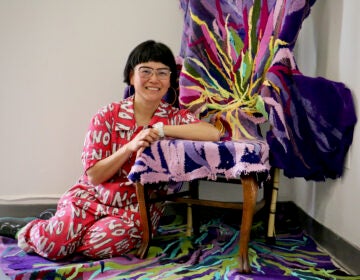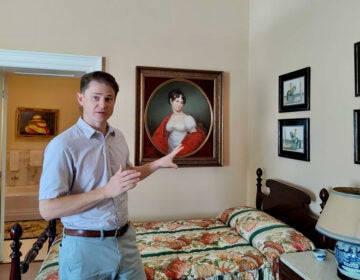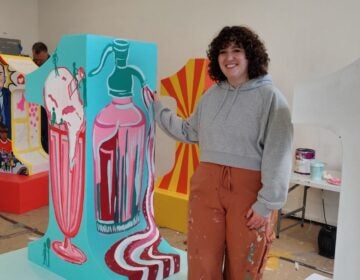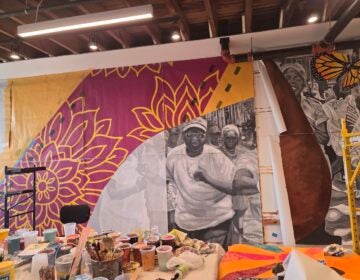A giant ginger jar rises in Kensington proclaiming, ‘We Here’
Potter Roberto Lugo installed the first of three totems to neighborhood creativity in the Mural Arts Philadelphia project.
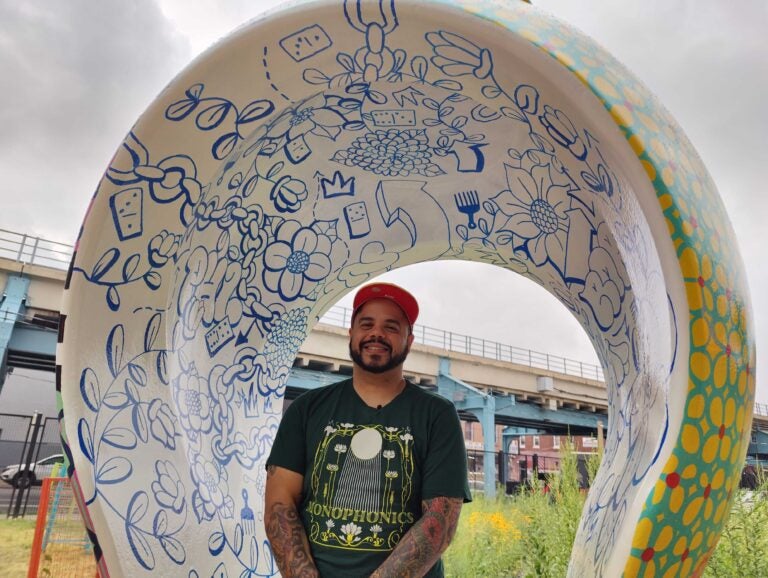
Artist Roberto Lugo decorated "We Here" with patterns reminiscent of his upbringing in Kensington, including gold chains, dominos and afro picks. (Peter Crimmins/WHYY)
From Philly and the Pa. suburbs to South Jersey and Delaware, what would you like WHYY News to cover? Let us know!
Two months after homeless encampments along Kensington Avenue were swept by police as part of Mayor Cherelle Parker’s plan to clean up the drug market in Kensington, a large sculpture has been erected in a vacant lot on Kensington Avenue near Allegheny, the epicenter of the crackdown.
It proclaims: “We Here.”
Ceramic artist Roberto Lugo created a 10-foot Chinese ginger jar decorated with patterns devised during neighborhood workshops. They include typical blue patterns seen on porcelain flatware but with symbols common to Kensington’s Black populations: gold chains, dominoes and hair picks.
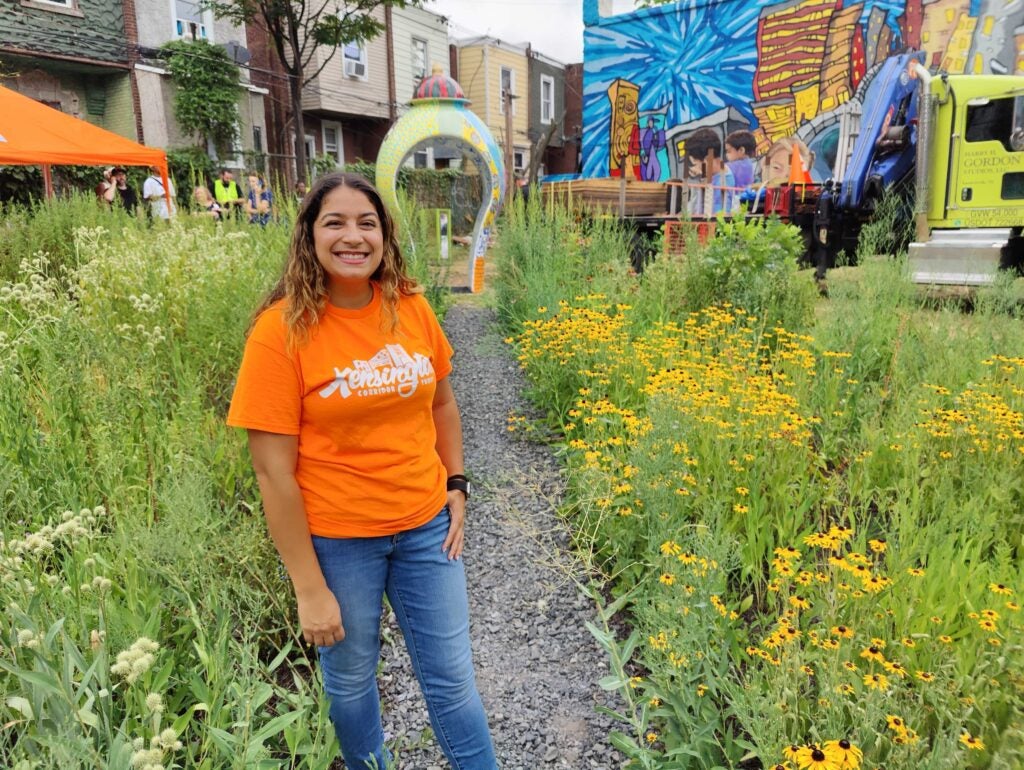
The lid is painted with the swirling green, red, and black pattern used by the hip-hop group A Tribe Called Quest on its album covers. Lugo included a black and white checkered pattern that was part of his childhood growing up on Kensington Avenue.
“For some reason, my dad had always put down black and white checkered floors in all of our houses,” Lugo said. “It reminds me of that.”
But what grabs the eye immediately is the big hole in the middle of the jar, big enough to walk through. The artwork is completed when someone stands inside of it and takes a selfie.
Lugo’s pottery has been lauded by the art world for including images of Black and Latino people on classic ceramic vessels, infusing into art history those people who are typically excluded from it. For this public sculpture, people visiting the piece are meant to include themselves into that history.
“Seeing people at art fairs and museums take a picture of themselves with artwork, I was thinking, ‘Why do people do that?’” he said. “I realized it’s because people want to see themselves reflected in art. So I wanted to design pieces that were specifically made for you to be able to do that.”
The piece is the first of three “We Here” sculptures that will be going up this summer in Kensington: at Taller Puertorriqueno, the Free Church of St. John, and this vacant lot (3236–3256 Kensington Ave.) publicly owned by the Kensington Corridor Trust. They are all intended to be permanent parts of the neighborhood.
“We Here” is a project of Mural Arts Philadelphia, which set up community workshops at its Kensington storefront space to invite neighbors to participate in Lugo’s creative process.
Director Jane Golden said Mural Arts has had a presence in Kensington for a long time, including for the last seven years in its storefront at Kensington and Allegheny avenues.
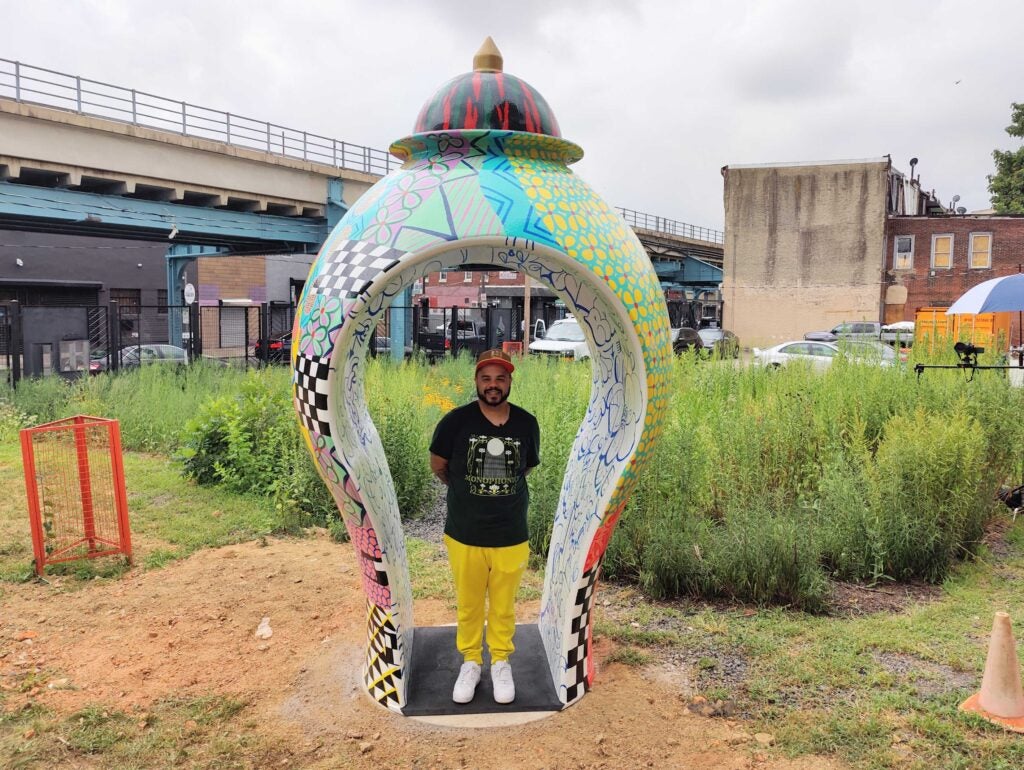
“I see the complexity, but I also see the wonder and the magic of Kensington,” Golden said. “We believe in this part of the city. Where some people might see something else, we see beauty, faith, and a hunger for art.”
The “We Here” project will be accompanied by a children’s book written by Lugo and author Frank Berrios, also called “We Here.” The bilingual story in English and Spanish is about a young Lugo growing up in Kensington and going to Career Day at school, where he begins to consider life as an artist.
“I’m trying to give visual representation of the creativity that happens in this community, that we’re not really known for but I feel is abundant,” Lugo said. “So many great artists come from this area.”
The book, being printed in a run of a few hundred, will be distributed to public libraries and schools around Kensington.
The first “We Here” sculpture was installed in a large vacant lot representing 11 rowhome parcels, much of which the Kensington Corridor Trust has planted as a pollinator garden with dozens of native plant species, such as brown-eyed Susans, milkweed and coneflowers.
A path cutting through the meadow-like garden leads visitors to the threshold of Lugo’s giant jar.
The sculpture is meant to be a permanent part of the lot. The land is part of 23 properties owned in trust by the KCT to be maintained for the benefit of the community. KCT acquires properties along Kensington Avenue and makes them available for rent or lease to community residents and business owners.
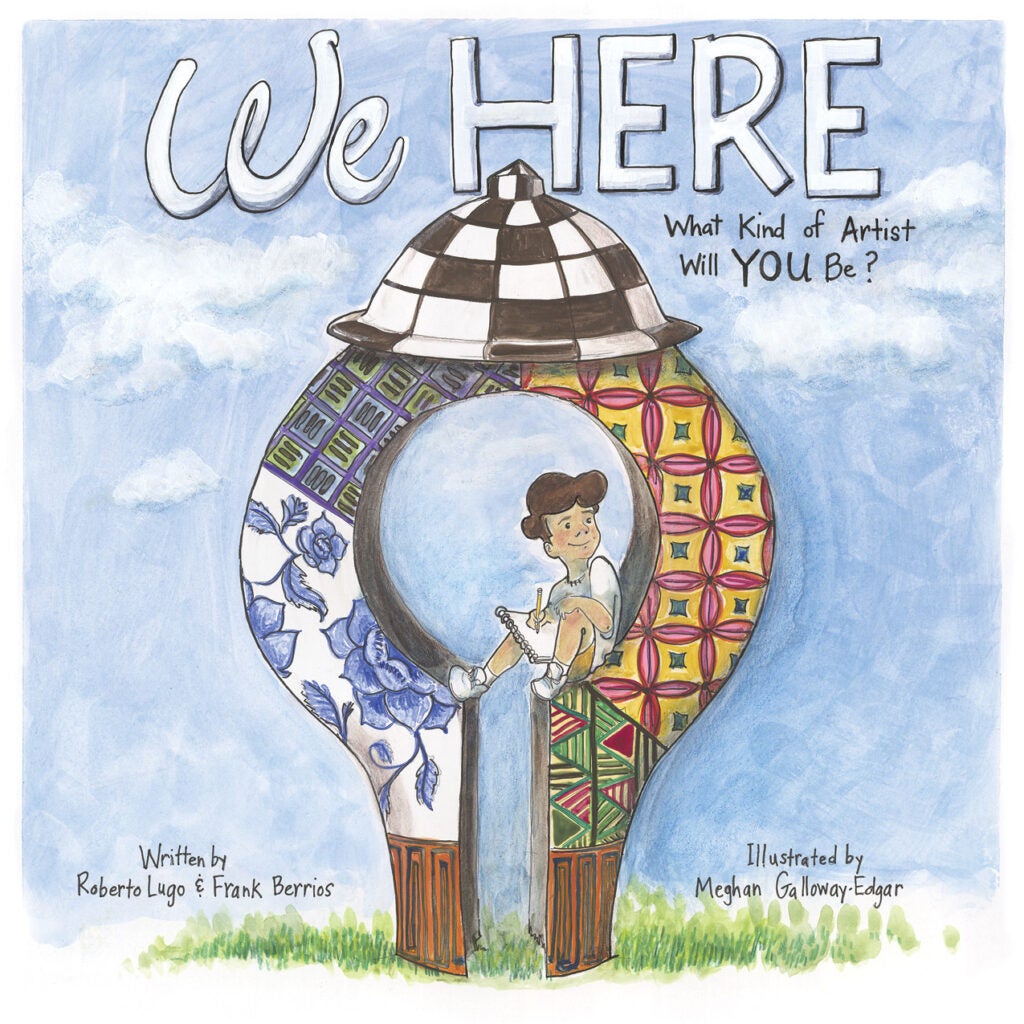
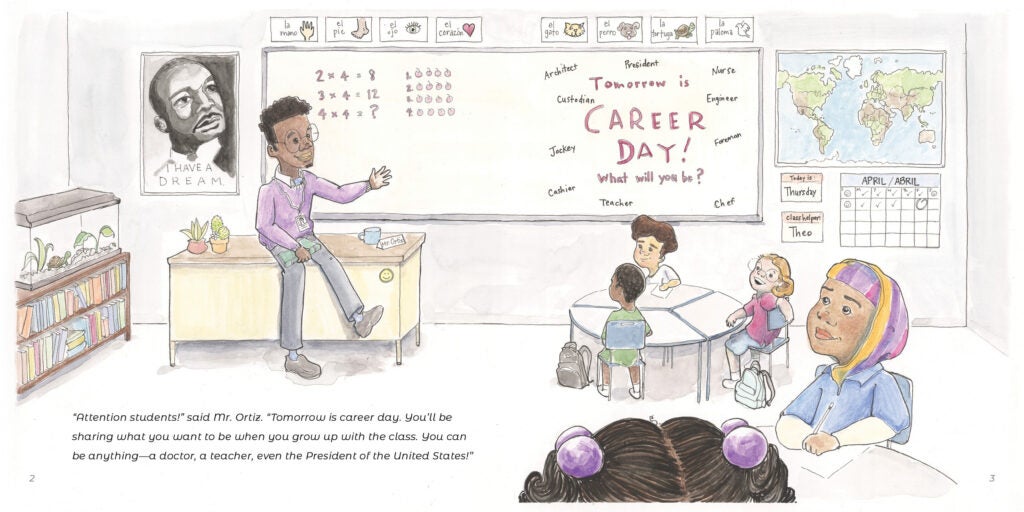
By removing properties from the market forces of gentrification, the community-led trust guarantees they will not be sold to developers and their tenants displaced.
Which means Lugo’s 10-foot ginger jar will likely remain in the garden for the long haul.
“Everything in the neighborhood trust is perpetually owned, meaning we can’t legally sell the assets,” said KCT development manager Jasmin Velez. “It’s intentional. We want to maintain affordability in this neighborhood. It’s about ensuring folks in the neighborhood own and have [a] say over what happens in their own community.”
The lot on the 3200 block of Kensington Avenue is fenced, so the public will only be able to interact with Lugo’s sculpture during when KTC opens its lot with public programs.
“We Here” is a colorful totem that can be seen from above by riders on SEPTA’s Frankford El trains, appearing like a garden folly in a wild meadow in the middle of Kensington.
“Roberto is from this neighborhood. It’s really wonderful to uplift artists from this community,” said Velez. “They don’t often get considered with other major artists. So it’s really really cool to have this in our space.”

Saturdays just got more interesting.
WHYY is your source for fact-based, in-depth journalism and information. As a nonprofit organization, we rely on financial support from readers like you. Please give today.



